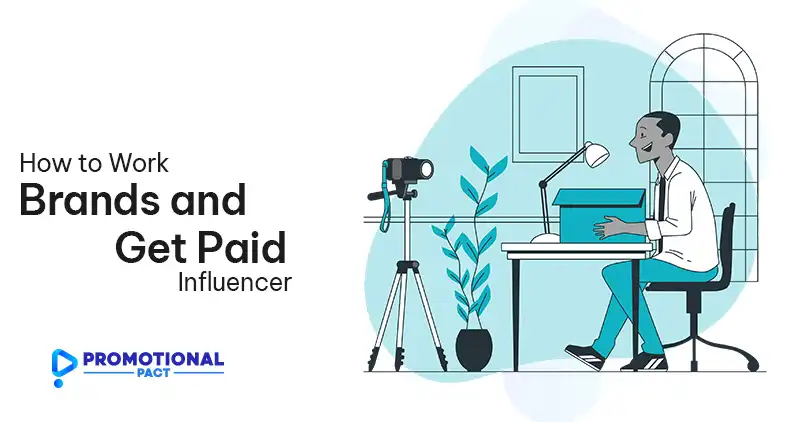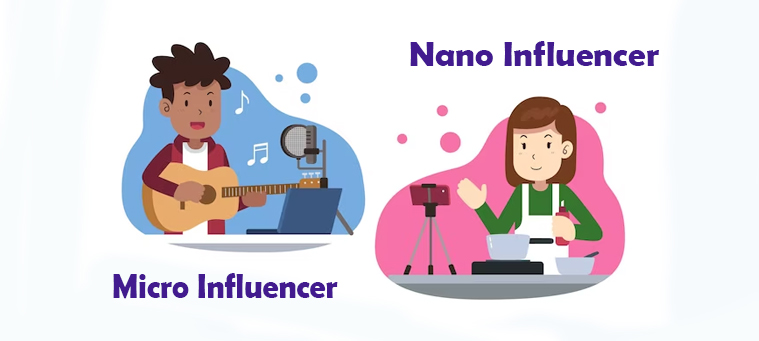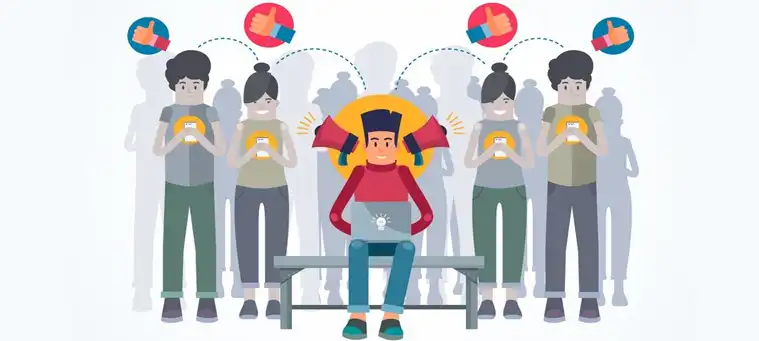Have you ever scrolled through Instagram, watched a YouTube video, or read a blog and thought, “Wow, it would be amazing to get paid by brands for doing something I love”? The idea of turning your passion into a lucrative career as an influencer is incredibly alluring.
But actually, making it happen and scoring those coveted brand deals? That’s where it gets tricky. With so much competition out there, how do you get noticed by brands and secure paid partnerships?

Step 1: Build a Brand that Others Want to Work With
Before brands will be interested in working with you, you need to build an audience, create stellar content, and develop an undeniably compelling brand that aligns with their values and marketing goals.
Discovering Your Niche
The first step is to get hyper-focused on your niche. Brands don’t want to work with generalists – they need influencers who have cultivated a specific, dedicated audience in a particular topic or industry.
Take some time to reflect on your interests, passions, expertise and audience. Where does your knowledge lie? What topics do you genuinely enjoy creating content about? What audience have you already started to attract?
Creating High-Quality Content
Great content is the heart and soul of every successful influencer’s brand. While it can be tempting to pump out a high volume of content, quality needs to be the top priority over quantity.
That means taking the time to produce engaging, valuable content tailored to your target audience. Content that informs, entertains, inspires, or educates in a unique way.
Building Your Community
An engaged, loyal community of followers is essential for attracting brand interest. That’s because brands want to work with influencers who have real influence – the ability to move their audience to awareness, interest and ultimately purchase.
Don’t just pursue vanity metrics like sheer follower counts. Instead, put a heavy focus on community engagement tactics.
The more invested your audience feels in your content and brand, the more sway you’ll have when promoting to them. That’s the kind of influence brands are willing to pay for.
Step 2: Attracting the Right Brands
At this point, you’ve defined your niche, grown an engaged audience, and cultivated a distinct brand with strong content and metrics to back it up. Now you’re ready to start pitching yourself to brands – but where do you even begin?
Finding the Perfect Brand Fit
Not every brand partnership makes sense – even if the paycheck is appealing. The key is finding brands that authentically align with your niche, values, and audience. Forcing an unnatural brand partnership can damage your credibility and alienate your fans.
Scrutinize each brand thoroughly – only move forward if there’s truly an authentic fit. That way, the partnership feels natural to your audience which increases sales and makes the brand want to renew for more campaigns.
Crafting an Awesome Media Kit
Once you identify aligned brands to pitch, your media kit is going to be your not-so-secret weapon. This is a digital brochure or PDF document that packages up all the details brands need to seriously consider you.
Your media kit should be highly visual and polished to showcase your abilities. When creating your media kit, don’t just rattle off boring stats – tell a compelling story that gets brands excited to work with you. Describe your creative process and content superpowers. Share case studies of engaged fan interactions. Use clean design, branded colors, and professional imagery.
Making an Irresistible Pitch
With your shiny media kit in hand, it’s time to craft a pitch that grabs brands’ attention and gets them champing at the bit to collaborate with you.
While you’ll learn to customize each pitch, here are some universal pitch tips:
- Keep it brief but impactful – no more than 5-7 lean sentences
- Study the brand thoroughly and address their current marketing priorities
- Speak directly to how your content can help them achieve key goals
- Share specific creative ideas and campaign details you could execute
- Use clear, persuasive language – you’re selling yourself and your value
- Follow their pitch preferences (some want formal proposals, others just emails
Step 3: Mastering the Brand Partnership
After you successfully land a paid brand partnership, you’ll need to navigate pricing, contracts, content creation, and project management like a pro.
Setting Rates & Negotiating
Pricing brand partnerships can be tricky, as there’s no one-size-fits-all formula. Your rates will depend on many variables.
Generally speaking, influencers can charge between $100 to $1000+ per Instagram post, $500 to $5000+ per YouTube video, and $200 to $2000+ per blog post or article. But the ranges can be much wider for celebs or super influential creators.
When just starting out, expect to be on the lower end of those tiers. As you build an impressive portfolio, you can increase your rates accordingly.
Understanding Contracts & Legal Protection
Brand contracts can be daunting for new influencers, with all the legalese and fine print involved. But it’s crucial to understand what you’re signing and get favorable terms to protect your rights.
Don’t just skim and sign! Go through contracts methodically and get any concerns addressed before signing. It’s worth hiring a lawyer who specializes in influencer/marketing contracts to review significant deals as well.
Planning Great Branded Content
With all the business ducks in a row, now you get to dive into the fun part – strategizing and creating amazing, high-quality branded content.
Develop a creative brief and brainstorm concepts that:
- Authentically showcase the brand in a natural, organic way
- Highlight key product benefits and selling points
- Tell a compelling, visually-stunning story around the brand
- Produce multiple, remix-able content assets (pics, video, posts, etc.)
- Add a unique spin or perspective that entertains your audience
Once your concepts are approved, take care to produce outstanding visuals, videos and copy. Work with professional editing tools and resources to craft picture-perfect branded assets.
Properly Disclose Paid Partnerships
As an influencer, one of your biggest responsibilities is staying compliant with proper disclosure policies around paid partnerships and sponsored content.
The consequences can be severe for influencers who fail to disclose sponsored posts – you could face penalties from the FTC, get temporarily or permanently banned from social platforms, and damage your reputation with fans.
The key is to ensure your audience understands this is a sponsored promotion so they can make informed decisions.
Bonus Step: Building Lasting Brand Relationships
While one-off brand sponsorships can be lucrative, the real goldmine for influencers is nurturing long-term partnerships. Fostering lasting relationships with brands leads to repeatedly renewing contracts, higher pay rates, more creative freedom, and priority for new opportunities.
Be an exceptional partner by providing stellar customer service – responding quickly, implementing feedback swiftly, double-checking approvals, and delivering projects on time.
Keep connections warm between paid gigs. Share user-generated content featuring the brand, promote their campaigns organically, and discuss future collaboration ideas. Send personal check-ins and updates to stay top-of-mind.
When a partnership wows, follow up on the success. Highlight key metrics, outline creative proposals for renewal, and ask for honest feedback to improve.
Every long-term brand partner boosts your income stability and negotiating power. Treat them like valued VIPs crucial to your sustainable influencer business.

